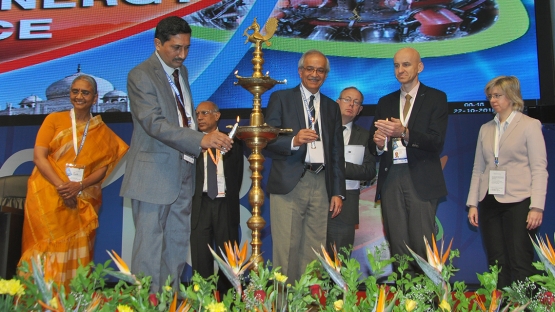Over 700 representatives from 39 IAEA Member States and 4 international organizations convened at the 27th IAEA Fusion Energy Conference
(FEC 2018) in Ahmedabad, India, last week to discuss key physics and
technology issues as well as innovative concepts related to nuclear
fusion as a future source of energy.
Fusion energy has existed for billions of years in the Sun, but its reproduction on Earth in a controlled and durable manner remains a challenge. Unlike fission, where atoms are split to produce energy, in fusion two lighter nuclei are joined together to make a heavier nucleus, while energy is released.
The over 100 plenary talks and 700 posters by physicists and engineers from around the world reviewed the latest developments in nuclear fusion research and engineering to address some of the challenges, such as the technological feasibility of fusion power plants and economic considerations related to the introduction of fusion energy, and considered these results together with the requirements for a fusion device that can generate net electrical power, called DEMO. The IAEA is coordinating international cooperation in this area.
The complete programme and book of abstracts is available here.
Fusion energy has existed for billions of years in the Sun, but its reproduction on Earth in a controlled and durable manner remains a challenge. Unlike fission, where atoms are split to produce energy, in fusion two lighter nuclei are joined together to make a heavier nucleus, while energy is released.
The over 100 plenary talks and 700 posters by physicists and engineers from around the world reviewed the latest developments in nuclear fusion research and engineering to address some of the challenges, such as the technological feasibility of fusion power plants and economic considerations related to the introduction of fusion energy, and considered these results together with the requirements for a fusion device that can generate net electrical power, called DEMO. The IAEA is coordinating international cooperation in this area.
The complete programme and book of abstracts is available here.









